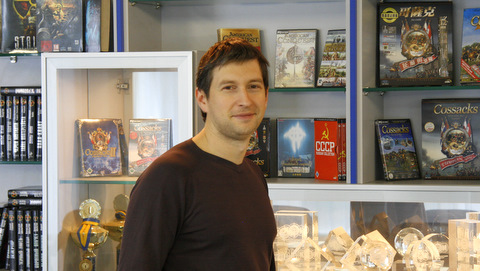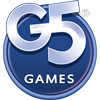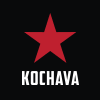
It’s not easy to be the most popular developer in Ukraine. GSC Game World not only attained international recognition through their Cossacks and S.T.A.L.K.E.R. franchises, but the studio also quickly became notorious for having educated many young Ukranian game developers. GSC’s former employees can be found in many game companies across and outside the Ukraine. We sat down with GSC Game World’s PR director Oleg Yavorsky to talk about GSC’s past, present and future.
Walking through the main hallway of GSC Game World’s offices outside the city center of Kyiv, it was hard to ignore the sewing workshop where two ladies were vigorously working on some type of clothing. “That’s our new line of S.T.A.L.K.E.R. clothes,” Yavorsky tells me. A few minutes later, he’s trying on some of the ‘prototypes’ to show off GSC’s new line of fashion for fans and community of the S.T.A.L.K.E.R. franchise. CEO Sergiy Grygorovych went beyond the call of duty to show off the early clothing prototypes to the community, doing a damn fine job at it if you ask us!
Pissing off Blizzard
Grygorovych started the company at the young age of 16 in 1997, with a small team of friends that were around the same age. Struggling with slow computers and little access to games, the team tried to find whatever they could get their hands on. “Back then, there was a big desire and ambition to create our own games,” Yavorsky says. “That was the ultimate goal.” Young Grygorovych and his team got their first jobs building multimedia encyclopedias, translating other games and making edutainment titles to create their first capital.
“Our boss is a big fan of strategy games so that was our first big desire,” Yavorsky says. Following the releases of games such as Warcraft 1 & 2 and Age of Empires, Grygorovych’s ambition was to create a new kind of game engine that would become the equivalent of Warcraft 3. “We actually took the graphics from Warcraft 2 and put it into our own technology, which allowed us to have 8000 humans and orcs on the screen at the same time,” Yavorsky says. “In the first Age of Empires, you could have 50 units on a screen and the second allowed around 200, but our engine allowed 8000 units on the screen at the same time. We tried to approach Blizzard with this idea and offer them our service, but they didn’t treat us seriously and even got offended.”
The Cossacks dance
The idea of creating the next Warcraft was pushed aside. “We had an idea of creating a historical real-time strategy game based on that engine,” Yavorsky says. “We wanted to be proud of our country and it seemed a good opportunity to showcase the country internationally, because not many people knew what Ukraine was.” GSC Game World would go on to involve their national pride and Ukrainian heritage into what would later become Cossacks. In 1998, Sergiy Grygorovych rented a small booth at the Milia multimedia and game show in Cannes. Joined by well known Ukranian new media and game journalist Alex Ptitsa, Grygorovych showed the Cossacks demo on one small computer. The small demo only featured the three nations of Russia, Ukraine and Europe (as one nation). The technology was so good, that it attracted a lot of attention from publishers. “For Sergiy, as he recollects now, that was the best show,” Yavorsky admits. “He was only 16 years old and around him were all the big companies like Blizzard, Activision, Electronic Arts, Atari and so on. He was overwhelmed and impressed.”
However, nobody would make an offer to Grygorovych because his company was a start-up. “Many companies were kind of reluctant to make a serious deal,” Yavorsky recalls. “Ultimately, we ended up signing with a start-up publisher from Germany called CDV. We were about 25-30 people, and they were about the same size.” CDV would go on and suggest multiple improvements to Cossacks, including growing the number of nations to 16.

“Cossacks was just on time and the right thing to offer to the market.” Yavorsky adds. The game would result in both CDV and GSC Game World becoming known around the world. The game was originally built by just 12 people at GSC headquarters. As a start-up, the company was also working on two other projects, a racing game called Hover Ace and a first person shooter named Venom: Codename: Outbreak. “We didn’t know which game would be our best hit,” Yavorsky admits. “At that time, we though it would be Hover Race, but Cossacks would eventually become number one.”

After Cossacks, GSC continued to work on the other two. After that, the company decided to stick with working on strategy games and first person shooters.
“We were lucky to have every second title we released be successful for us,” Yavorsky says. GSC would eventually end up only specializing in developing real-time strategy and first person shooters, resulting in sequels to Cossacks and the S.T.A.L.K.E.R. franchise.
A warm nest
The international and national recognition GSC has received in the years since Cossacks was released did not only bring in a lot of money, but also new people. As the Netherlands once had their Guerrilla studios, Germany had Crytek and the Ukraine had GSC Game World. Once the word was out that GSC had plans to grow, young Ukranian game makers flocked to the company trying to get a job working on the Cossacks of S.T.A.L.K.E.R. franchise.
“By now, if you take basically any game development studio here in Kyiv they will have some of the people that at some point used to work for us,” Yavorsky argues. Throughout the 7-year development of S.T.A.L.K.E.R.: Shadow of Chernobyl, over 100 people were involved in the production of the game. “Very few people ended up staying throughout those years of trial and error.”
Alright stop, S.T.A.L.K.E.R. time!
The development of S.T.A.L.K.E.R.: Shadow of Chernobyl was plagued by hardships, delays and other struggles. “The last couple of years were very hard,” Yavorsky admits. “People were obviously tired of the very long work on the same project.”
When S.T.A.L.K.E.R. was first announced, the game instantly received a lot of attention by the international game press. “We became instantly famous, expected and awaited because it was revolutionary in many respects,” Yavorsky recounts. “Internally, it was prestigious to work on S.T.A.L.K.E.R.. We had two big teams at that time, one strategy team and one action team that worked on S.T.A.L.K.E.R.. I think, internally, the strategy team was a little bit envious of the S.T.A.L.K.E.R. team, because they were working on such a top level project.”
According to Yavorsky the sense of prestige also had its downturns. The heightened ambition and the desire to put everything in one game resulted in the game becoming bloated. “Because of our lack of experience to release such a big project, a lot of errors and mistakes were made,” Yavorsky admits. By the fifth year of development, after postponing the title several times, Yavorsky’s job as PR director wasn’t getting any easier. The community who once supported and loved GSC Game World, started to turn against the company. “We saw them already hating us, for not releasing the game for so many years and constantly promising to release it,” Yavorsky says. ”There was a lot of pressure both internally, from the outside and the publisher who wanted to get the game out. At some point, we were even on the verge of breakdown and closing the project. It was kind of a miracle to have the forces left internally to finish the game completely and get it out.
The delay caused GSC to perform some serious cuts to S.T.A.L.K.E.R. In the last year of its development, THQ sent a producer to help. “His basic role was to get the project finished,” Yavorsky says. The possibility to drive vehicles, certain monsters and even entire levels were consequently cut from the game, only to later be uncovered inside the game’s code by fanatic modders. “We eventually managed to release a unique atmosphere which still made S.T.A.L.K.E.R. stand out from other games,” Yavorksy adds. With such a hardship behind them, the core team that remained continued onward to create the latest two S.T.A.L.K.E.R. titles, Clear Sky and Call of Pripyat. “With the later S.T.A.L.K.E.R. releases it was a lot easier for us because the team was already well prepared for such a game,” Yavorsky says. “They knew it well and the engine was stable, which made us much stronger.”
As with many other game studios in the Ukraine, GSC had the daunting task during S.T.A.L.K.E.R. of educating their own developers. “We don’t have any universities that teach you game design,” Yavorsky says.”The industry here is at least 10 years younger than other parts of the world. Ultimately, we had to learn by ourselves. Our personal approach is something that we developed through our own designs and experiments.”
National pride
Both the Cossacks and S.T.A.L.K.E.R. franchises show off GSC’s focus on their own home turf and heritage. According to Yavorsky, it was always obvious to base the themes of their games on their own culture and country. “We grew up here, we know how things work here and we know what the world looks like here,” Yavorsky argues. “We don’t know much about LA or London or other parts of the world.”
The dark and gloomy style of S.T.A.L.K.E.R. took many people by surprise and sparked a lot of curiosity. GSC took a lot of effort in the game to offer people a look at the areas surrounding the Chernobyl nuclear power plant, reconstructing some of the areas into the smallest detail.
Though the palet and art style sparked interest for some games and definitely set them apart from their Western counterparts, it wasn’t always so well received. GSC was contracted by Ubisoft to work on a tie-in game for the Alexander movie starring Colin Farrell, but Ubisoft wasn’t satisfied with GSC’s choice of palet. “Ubisoft believed the picture on screen looked very gray and gloomy, which is, by the way, a very common tendency for local games,” Yavorsky says. “They look very dark. It’s probably some kind of national thing, how our artists see color. Maybe because our lives used to be so gray and gloomy we like darker kinds of things. So Ubisoft had to bring in their own artist who used to correct the gamma on screen and make the picture look nicer and brighter, more appealing to Western players.”
S.T.A.L.K.E.R.S. vs. pirates
Catering so much to their own country and Eastern Europe, GSC has also had its share of problems because of piracy. The company’s games are released much earlier in Eastern Europe than in the West for that specific reason. “We actually get all our pirated games from the west,” Yavorsky says. “Because they get delivered to the western stores by the publishers like two weeks earlier to end up on the shelves at retail stores.” The early availability of games at retail causes the game to be cracked before it would even be released in the west. “Then by the time it’s released in the west, we would already have it here on the market sold, pirated and translated into Russian,” he adds.
When receiving western publishers at their offices, Yavorksy and his team would regularly make fun of them with their own titles. “We would be presenting their pirated games and very often they would be holding a game that isn’t out on their own market yet and our players can already buy and play.”
The earlier release of GSC’s games in Eastern Europe also only features the Russian language, limiting any use of the game for any westerners that would consider downloading the game. Catering to a very fanatic community of Stalker fans called ‘Ya Stalker’, (http://yastalker.com/home.php) Yavorsky also noticed a growing amount of support from the local fans. “We saw a lot of people on forums blaming other people for not buying a legal copy to support the local developer,” he says. “There was some kind of local pride.”
Fighting piracy is never an easy thing in the Ukraine, but even GSC has been directly involved in the crackdown of pirates. “Sometimes we succeed, actually doing some successful raids with police to seize a batch of pirated discs,” Yavorsky says. “For the police to do that, they need a lawsuit case. They need the right-holder to actually claim his rights were being violated. So we need to be involved directly to get this help.”

The bigger problem GSC and other developers are facing is that people frequently can not distinguish the legal copy from the elaborately designed illegal one. Sometimes copies are even completely mimicked up to the exact cardboard box casing, validation stickers, booklets and extra’s. “The local pirate industry has been very mature, it’s not a problem for them,” Yavorksy argues. “They will just fake it being a licensed copy.” As a result, players have repeatedly contacted GSC with complaints about the lack of a legitimate key in their game to access the online capabilities, only to be pointed to the illegal nature of their copy.
Beyond S.T.A.L.K.E.R.
Even for GSC, the need to put their own country and fellow game developers on the global map has become very important. As one of the bigger studios in the Ukraine that grew out of an ambition and desire to learn, new talent is constantly needed to fill the ranks.

“You have to train a new person to fit in the team, to get to know the technology, understand the engine, work with our own technology, instruments and tools,” Yavorsky says. “And you have to find people willing to learn and master it. So of course we have to sometimes baby-sit our new personnel, but that’s the way it happens.” Even today, many new game studios are still founded by people leaving bigger companies like GSC to find their own fortune and fame. It’s the circle of life for game developers in many Eastern European countries that lack the necessary government support and education. “We want the Ukraine to become a center for the production of games, special effects for the movie industry needs,” Yavorsky says. ”Because the talent is definitely here and we have the experience.”
In the meanwhile, the S.T.A.L.K.E.R. franchise is now reaching a peak of attention around the world. GSC Game World is making good use of it by promoting S.T.A.L.K.E.R. novels, a TV series pilot and even a clothing line. With a brand new engine specially intended for their S.T.A.L.K.E.R. 2 project currently in development, some developers at GSC are also looking forward to new ideas and projects to challenge themselves creatively once more, including Yavorsky himself. “I personally don’t want GSC being associated only with S.T.A.L.K.E.R., because we have so many other ideas and projects and titles,” Yavorsky argues. “Personally, I’d love to see Cossacks back in development.”
S.T.A.L.K.E.R. 2 is currently in development by GSC Game World and has been scheduled for release in 2012.
Comments













One comment
Pingback: Videogame Visionary - Game industry, game studies, game culture. Making sense of it all. » Blog Archive » MONTHLY ARTICLE WRAP-UP – November
You must log in to post a comment.